
226.翻转二叉树
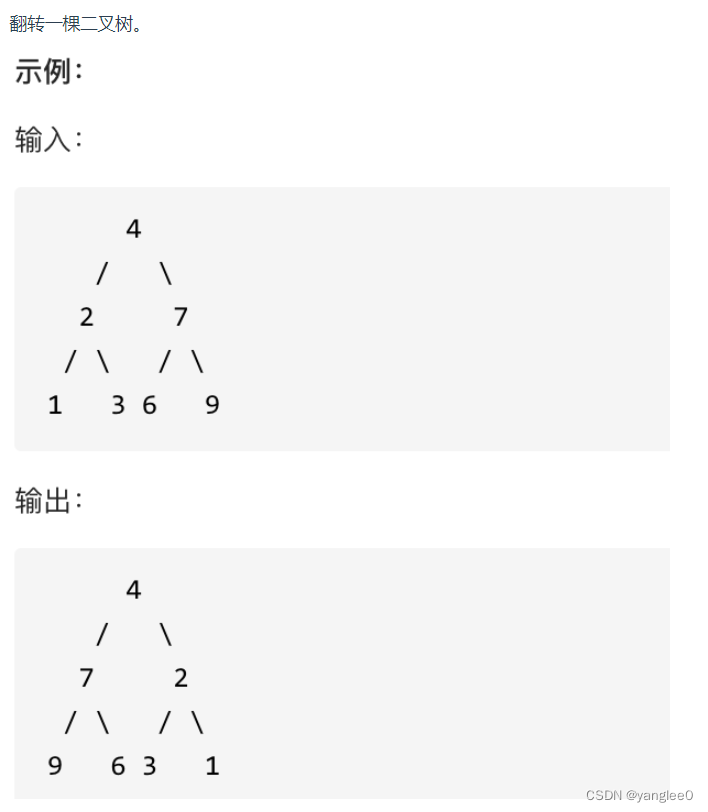
class Solution:
def invertTree(self, root: Optional[TreeNode]) -> Optional[TreeNode]:
if not root:
return
tmp = root.left
root.left = root.right
root.right = tmp
self.invertTree(root.left)
self.invertTree(root.right)
return root
101. 对称二叉树
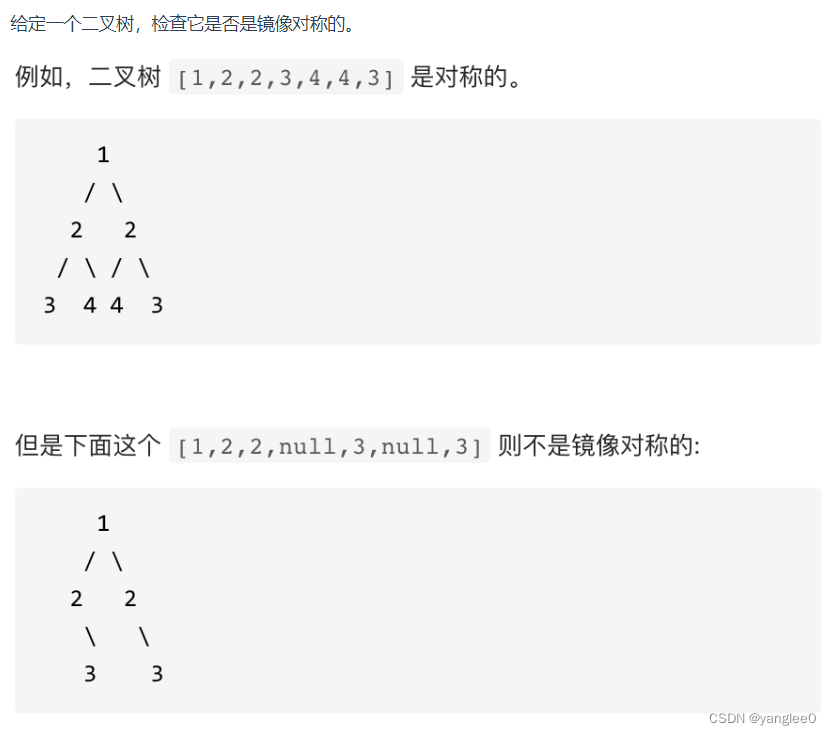
class Solution:
def left_right(self, left, right):
if (not left and right) or (not right and left):
return False
if not left and not right:
return True
if left.val != right.val:
return False
if self.left_right(left.left, right.right) and self.left_right(left.right, right.left):
return True
return False
def isSymmetric(self, root: Optional[TreeNode]) -> bool:
if not root.left and not root.right:
return True
if not root.left or not root.right:
return False
return self.left_right(root.left, root.right)
104.二叉树的最大深度
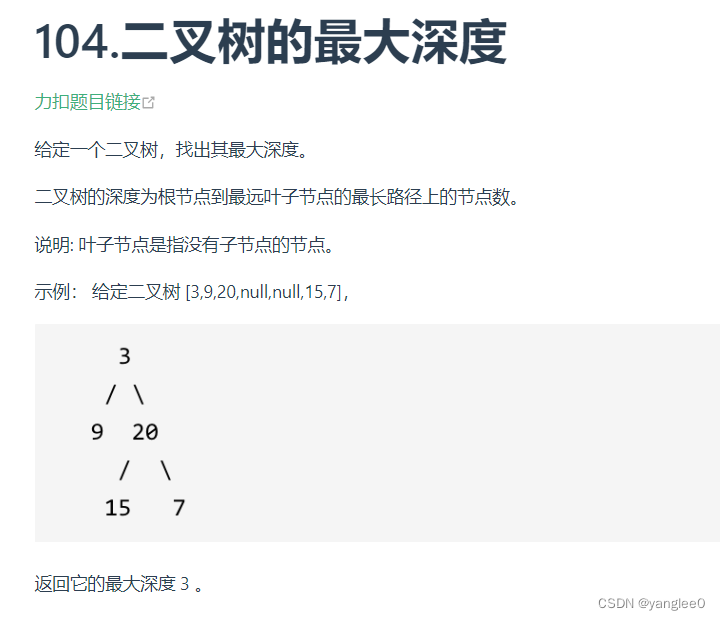
class Solution:
def maxDepth(self, root: Optional[TreeNode]) -> int:
res_mid = []
def bfs(node, level, res_mid):
if not node:
return
if len(res_mid) == level:
res_mid.append([])
res_mid[level].append(node.val)
bfs(node.left, level + 1, res_mid)
bfs(node.right, level + 1, res_mid)
bfs(root, 0, res_mid)
return len(res_mid)
111.二叉树的最小深度
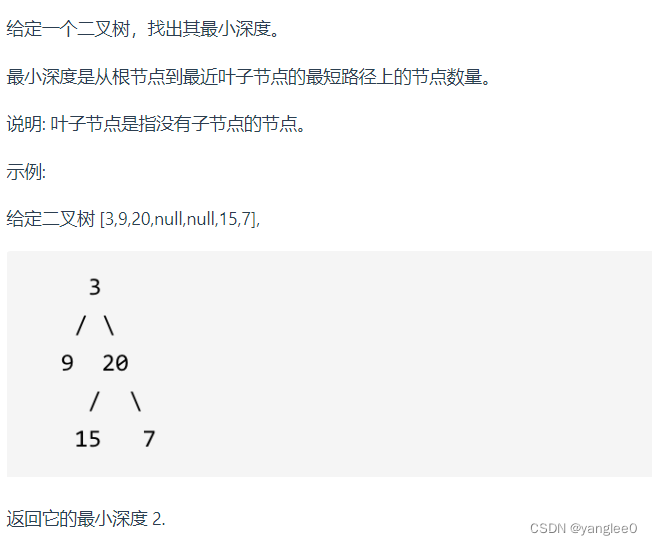
class Solution:
def minDepth(self, root: Optional[TreeNode]) -> int:
if not root:
return 0
if not root.left and not root.right:
return 1
if not root.left:
min_depth = self.minDepth(root.right)+1
if not root.right:
min_depth = self.minDepth(root.left)+1
if root.left and root.right:
left = self.minDepth(root.left)+1
right = self.minDepth(root.right)+1
min_depth = min(left,right)
return min_depth
222.完全二叉树的节点个数
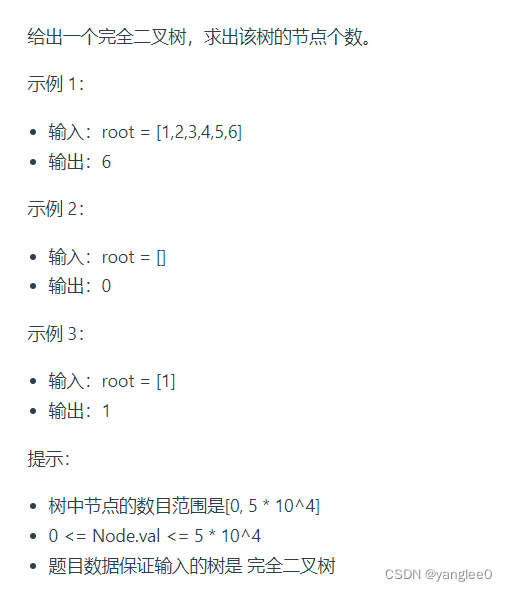
class Solution:
def countNodes(self, root: Optional[TreeNode]) -> int:
res = []
def bfs(node,level,res):
if not node:
return
if len(res) == level:
res.append([])
res[level].append(node.val)
bfs(node.left,level+1,res)
bfs(node.right,level+1,res)
bfs(root,0,res)
final = []
for i in res:
for j in i:
final.append(j)
return len(final)
110.平衡二叉树
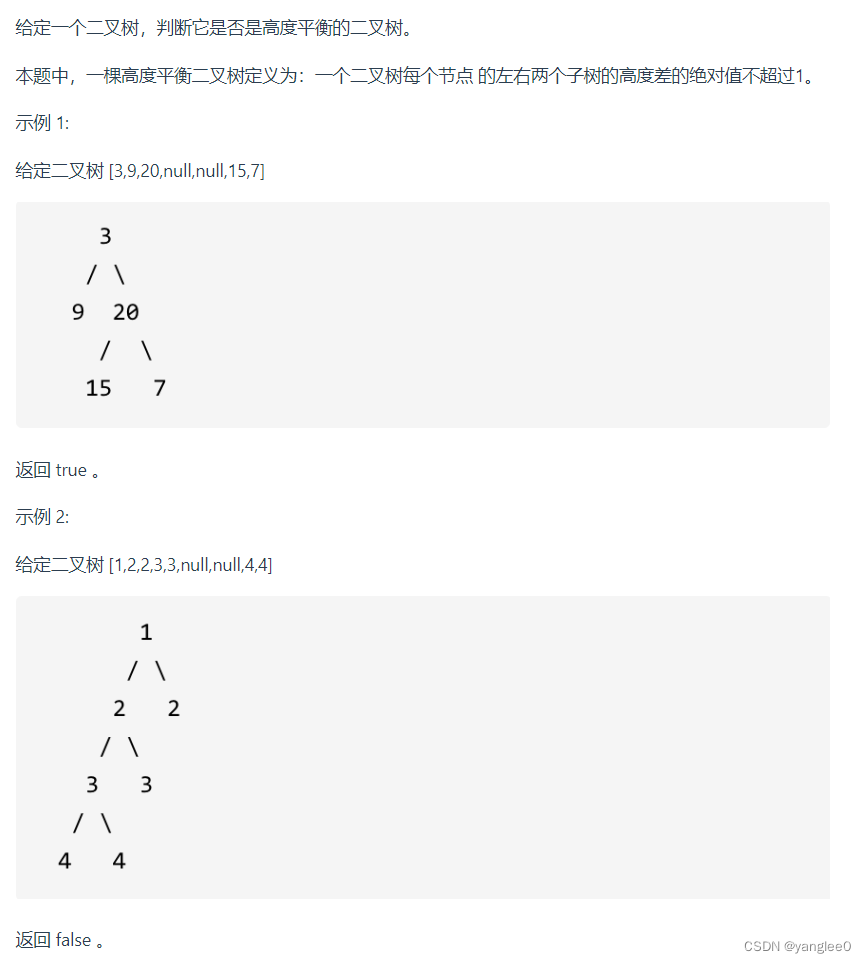
class Solution:
def height(self, node): # 自下而上
if not node:
return 1
left_height = self.height(node.left)
right_height = self.height(node.right)
if left_height == -1:
return -1
if right_height == -1:
return -1
if abs(left_height - right_height) > 1:
return -1
else:
return 1 + max(left_height, right_height)
def isBalanced(self, root: Optional[TreeNode]) -> bool:
if self.height(root)!=-1:
return True
else:
return False
257. 二叉树的所有路径
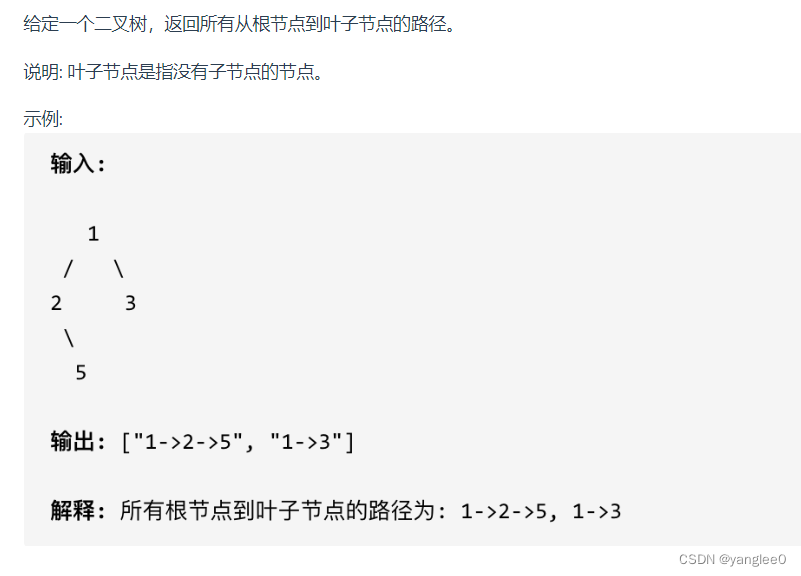
class Solution:
def binaryTreePaths(self, root: Optional[TreeNode]) -> List[str]:
res = []
if not root:
return res
def dfs(root,path):
path += str(root.val)+'->'
if not root.left and not root.right:
res.append(path[:-2])
return
if root.left:
dfs(root.left,path)
if root.right:
dfs(root.right,path)
dfs(root,'')
return res
404.左叶子之和
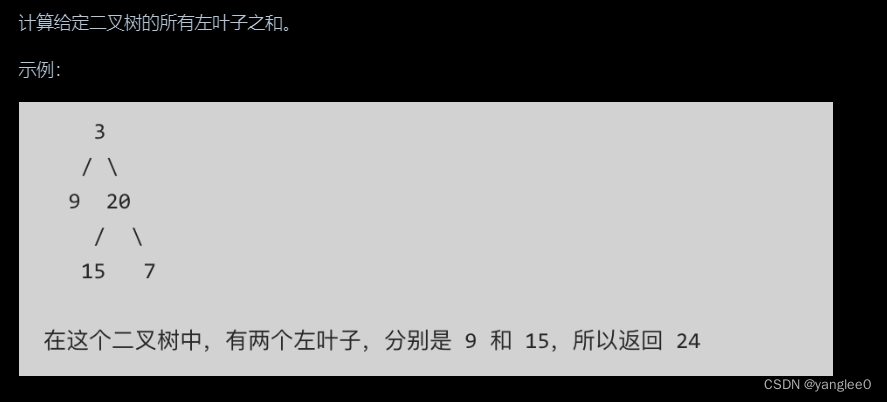
class Solution:
def sumOfLeftLeaves(self, root: Optional[TreeNode]) -> int:
res = []
def dfs(root, path, level):
path.append(root.val)
if not root.left and not root.right and level == 1: # 判断是否为左子树 , 用level来标记左子树
res.append(path[:])
return
# path.append(root.val)
if root.left:
dfs(root.left, path, level=1)
if root.right:
dfs(root.right, path, level=0)
dfs(root, [], level=-1)
final = 0
for i in res:
final += int(i[-1])
return final
513.找树左下角的值
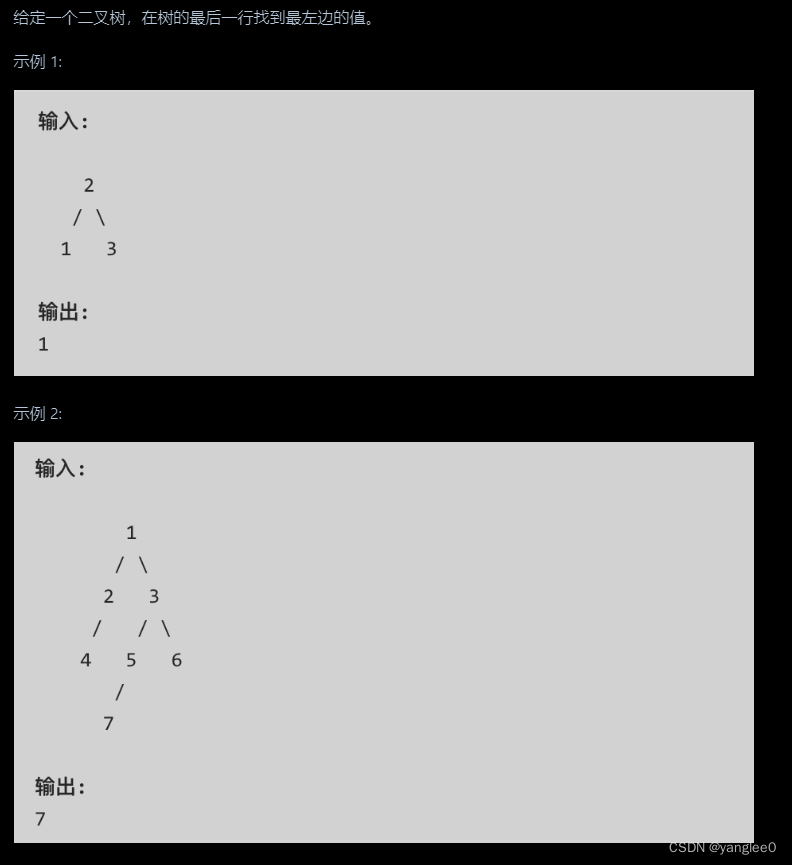
# 层次遍历,反馈最后一层的第一个值就可以了
class Solution:
def findBottomLeftValue(self, root: Optional[TreeNode]) -> int:
res = []
def bfs(node,level):
if not node:
return
if len(res) == level:
res.append([])
res[level].append(node.val)
bfs(node.left,level+1)
bfs(node.right,level+1)
bfs(root,0)
return res[-1][0]
112. 路径总和
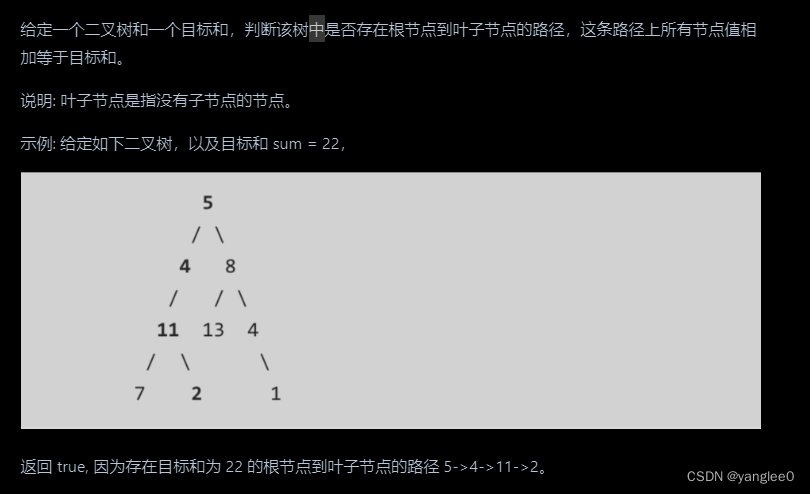

# 路径和问题需要用到回溯了,这里注意回溯的时候要pop一下。和普通递归的地方再进一步。
class Solution:
def hasPathSum(self, root: Optional[TreeNode], targetSum: int) -> bool:
res = []
def dfs(node,path):
if not node:
return
path.append(node.val)
if not node.left and not node.right and sum(path[:]) == targetSum:
res.append(path[:])
# return
dfs(node.left,path)
dfs(node.right,path)
path.pop() # 路径问题还是要pop一下
dfs(root,[])
return True if res else False
113. 路径总和 II

class Solution:
def pathSum(self, root: Optional[TreeNode], targetSum: int) -> List[List[int]]:
res = []
def dfs(node,path):
if not node:
return
path.append(node.val)
if not node.left and not node.right and sum(path[:]) == targetSum:
res.append(path[:])
return
if node.left:
dfs(node.left,path)
path.pop()
if node.right:
dfs(node.right,path)
path.pop() # 路径问题还是要pop一下
dfs(root,[])
return res
106.从中序与后序遍历序列构造二叉树
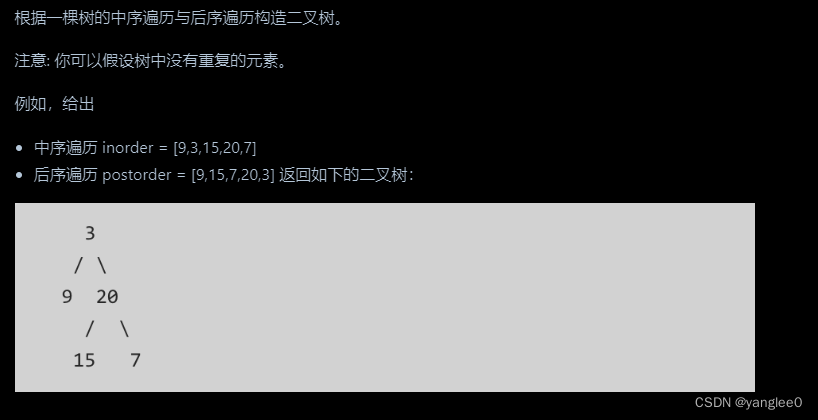
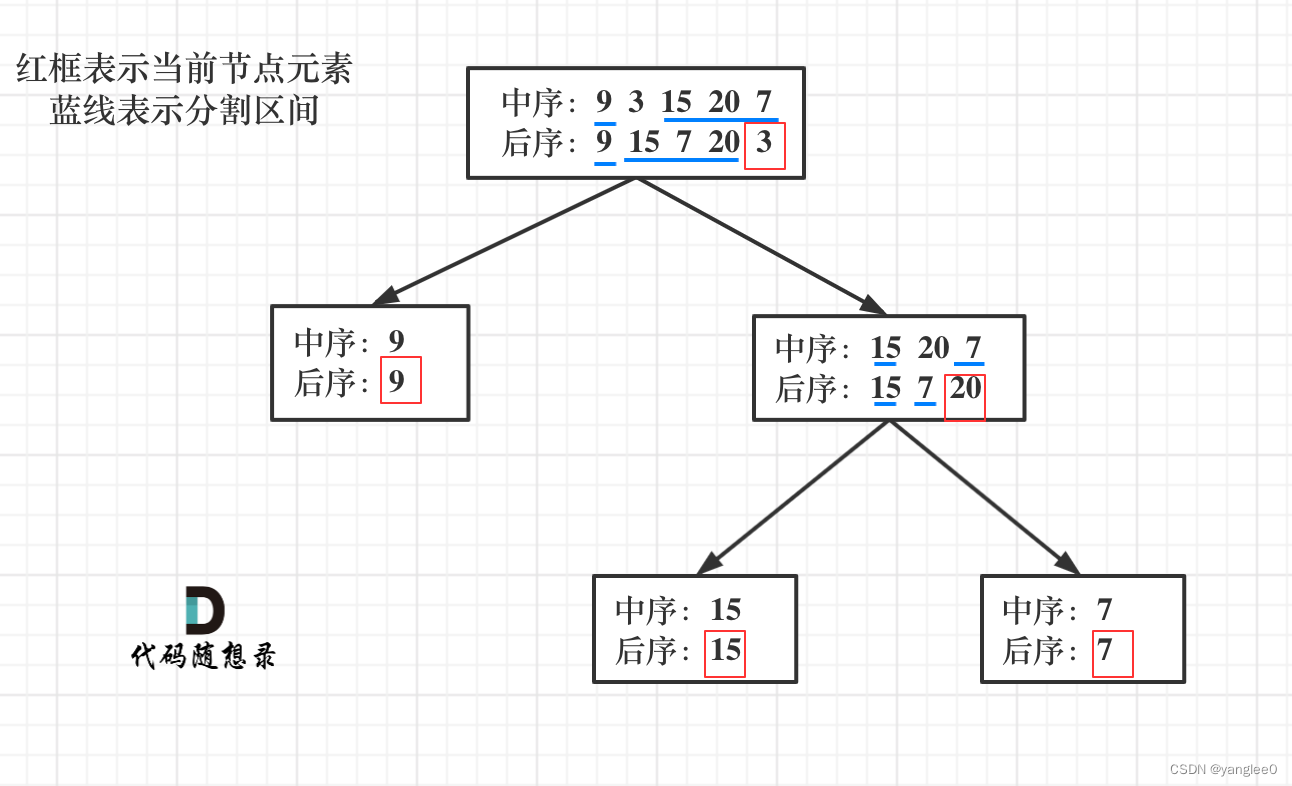 第一步:如果数组大小为零的话,说明是空节点了。
第一步:如果数组大小为零的话,说明是空节点了。
第二步:如果不为空,那么取后序数组最后一个元素作为节点元素。
第三步:找到后序数组最后一个元素在中序数组的位置,作为切割点
第四步:切割中序数组,切成中序左数组和中序右数组 (顺序别搞反了,一定是先切中序数组)
第五步:切割后序数组,切成后序左数组和后序右数组
第六步:递归处理左区间和右区间
class Solution:
def buildTree(self, inorder: List[int], postorder: List[int]) -> Optional[TreeNode]:
if postorder:
root = TreeNode(val = postorder[-1])
root_index = inorder.index(postorder[-1])
root.left = self.buildTree(inorder[:root_index],postorder[:root_index])
root.right = self.buildTree(inorder[root_index+1:],postorder[root_index:-1])
return root
105. 从前序与中序遍历序列构造二叉树

class Solution:
def buildTree(self, preorder: List[int], inorder: List[int]) -> Optional[TreeNode]:
if preorder:
root = TreeNode(val=preorder[0])
root_index = inorder.index(preorder[0])
root.left = self.buildTree(preorder[1:root_index+1],inorder[:root_index])
root.right = self.buildTree(preorder[root_index+1:],inorder[root_index+1:])
return root
654.最大二叉树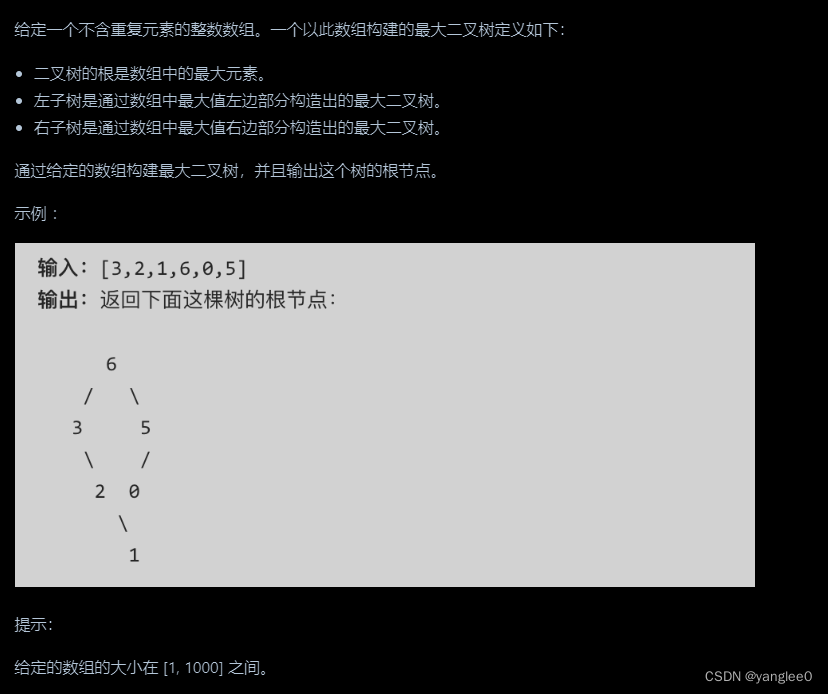
class Solution:
def constructMaximumBinaryTree(self, nums: List[int]) -> Optional[TreeNode]:
if nums:
root_value = max(nums)
root = TreeNode(val = root_value)
root_index = nums.index(root_value)
root.left = self.constructMaximumBinaryTree(nums[:root_index])
root.right = self.constructMaximumBinaryTree(nums[root_index+1:])
return root





















 205
205











 被折叠的 条评论
为什么被折叠?
被折叠的 条评论
为什么被折叠?








